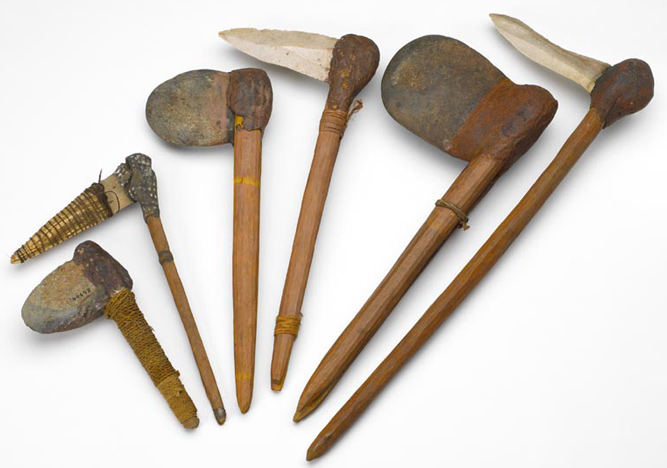 Stone axes and picks, early 1900s
Stone axes and picks, early 1900s
TLF ID R6695
This is an image showing six stone axes and picks made by people of the Warumungu and Tjingali groups near Tennant Creek in central Northern Territory. On average, the axes are 50 cm long and 20 cm wide, while the picks are 40 cm long and 25 cm wide.
